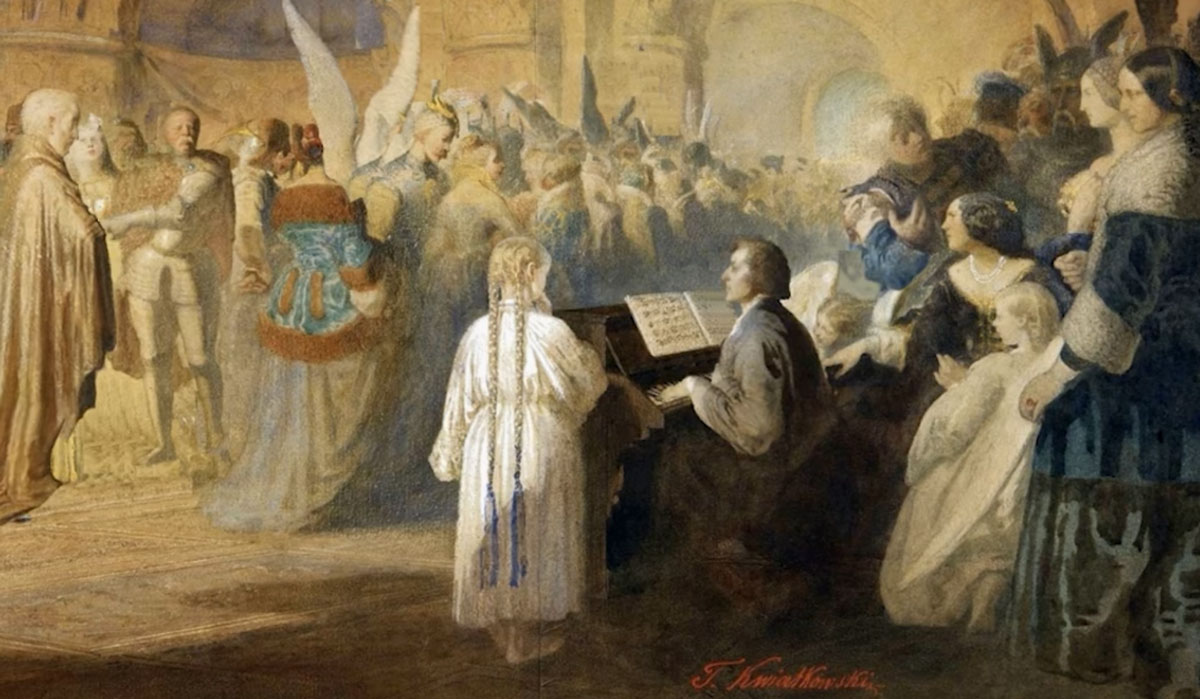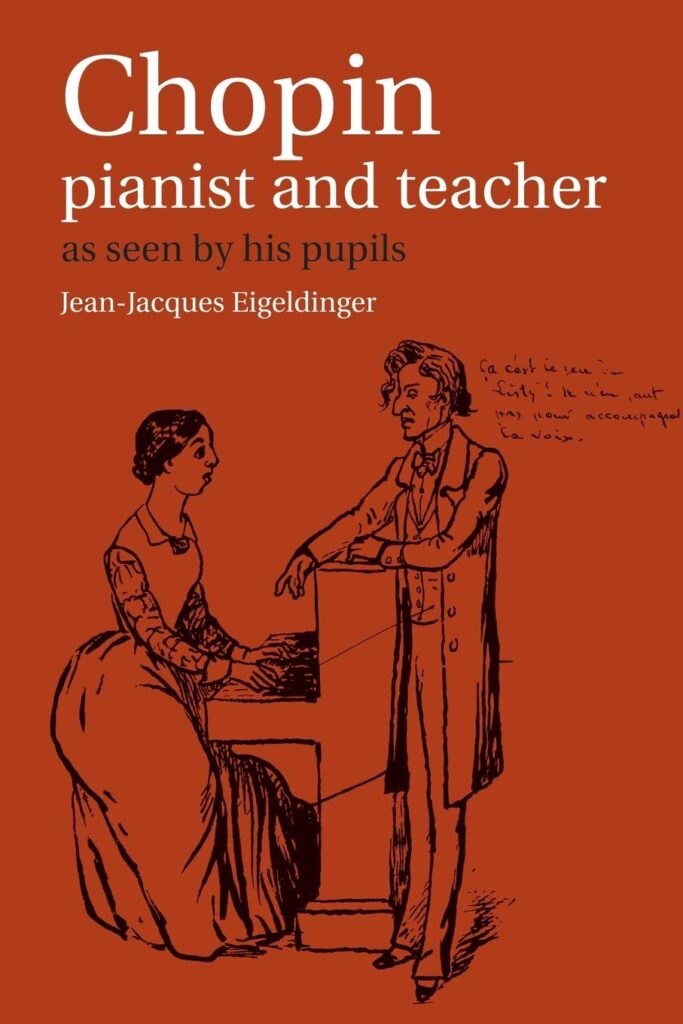The Chopin Method – A Master Deep Dive
The independent educational project “The Chopin Method” aims to bring Chopin’s technical ideas to a wider audience. By using biomechanical animations and new anatomical references, its creator Dr. Claudio Saavedra presents a series of videos which brings new light on Chopin’s views on piano playing.

Anyone interested in Frédéric Chopin’s piano music and life story might know that Chopin was one of the most sought after piano teachers to be found in Paris. His massive number of noteworthy students/pianists formed the foundation for a tradition and future ideals of Chopin playing which is highly alive, researched and nurtured well into our present time.
Chopin also made sketches on a teaching method – “Sketch for a method’ (Projet de méthode) which was never completed but very creatively translated and presented as an Appendix in Jean-Jacques Eigeldinger’s book ”Chopin: Pianist and Teacher” (1987).
Now, the Internet resource ”The Chopin Method” available on YouTube (46 minutes divided in 6 video sessions), has taken the subject even further by offering a deep look into Frédéric Chopin’s ideas on piano playing based on research and expertise in biomechanical aspects carefully explaining Chopin’s creative basis and ideas as a teacher and performer. High quality animated videos pinpoint topics and details of great interest for any pianist and teacher who would like to get a more profound angle of the Polish master. The project is supported by paid memberships at the website Patreon.com offering complimentary material.
The Chopin Method was created by Dr. Claudio Saavedra, pianist, biochemist and post-graduate researcher and Piano Street had the chance to ask him a few questions.
Piano Street: Dear Claudio. Thank you for taking on Chopin in a way many a pianist and teacher do find extremely interesting. You have a unique background combining your knowledge in biochemistry, the piano and Chopin. How did The Chopin Method project start and which are your aims with such an initiative?
Dr. Claudio Saavedra: The Chopin Method project began eleven years ago, when my wife and I were visiting Le Mans, France. We entered a music shop and there it was, the Eigeldinger book called “Chopin vu par ses élèves” (Chopin: Pianist and Teacher).
 I brought it home and read it many times. Chopin’s équisses pour un méthode de piano (EMP) plus the account of his students, used a language that seemed to come from the future: finger support, the mechanic sequence of where the finger triggers the action, the natural architecture of the hand to address the keyboard, he use of finger individuality to make music, etc.
I brought it home and read it many times. Chopin’s équisses pour un méthode de piano (EMP) plus the account of his students, used a language that seemed to come from the future: finger support, the mechanic sequence of where the finger triggers the action, the natural architecture of the hand to address the keyboard, he use of finger individuality to make music, etc.
I have been a classical pianist since childhood, and yes, I have come across some of these quotes here and there, in a disseminated fashion. But for the most part, I mistakenly took Chopin’s opinions as something idiosyncratic to the composer’s way of playing. Jean Jacques Eigeldinger brought the first compilation of all known Chopin’s technical insights, and it was a revelation.
At first, I began to apply some of this knowledge in my own piano development, with tons of patience and slow and delicate practice. In a short while, I gained not just technical freedom, but also a much better sound and dynamic range. I can say that my own piano professor, the legendary Frida Conn from Santiago de Chile, was stunned by this progress in a forty-something years old man.
So I went to look for more on-line literature on the biomechanical aspect of playing piano, with dismal results (later, when the YouTube channel was being viewed, several pianists pointed out to me the names of authors and books on the subject). There is, of course, academic peer-reviewed literature on piano biomechanics, but coming from a hard core scientific background, I was not too impressed with the science behind. Besides, most of this material would be out of reach for the pianist, and even if that weren’t the case, the literature would certainly be of little pedagogic impact by itself.
PS: You have chosen a very modern animation technique in order to clarify your ideas?
Well, it was at this point that I decided to use video animations. The goal was and still is helping others in getting better at playing piano from within one’s body (articulations, muscles, points of support, levels, etc.). Quite similar to an athlete that improves performance by being aware of his/her own machinery. Now I believe that if I had had this knowledge from childhood, I’d probably have pursued a concert pianist career. And from the feedback the channel gets today, many people from all over the world tell a similar story.
I don’t mean to say that my piano education was inferior per se. I had the typical training where the hands learn to play a keyboard in C Major, lots of Czerny, Hanon, etc. followed by the traditional conservatory program. Unfortunately, I developed a harsh sound and whatever piece I played seemed physically uncomfortable and musically unsatisfactory. But I kept playing piano because it was an important aspect of my life.
It is important to mention that the Chopin Method channel in YouTube has also had some criticism from senior piano professors who dismiss a biomechanical approach. For example, the channel has got some aggrieved feedback in social media saying that “music by itself solves technical difficulties”, or that “students will become obsessed with their body and set music aside”. Here, I just want to mention that learning about our own piano biology has nothing to do with claiming a new school or ideology. The Chopin Method is about revealing an underlying reality, one that is scarcely discussed even in today’s 21st century piano academy. I have no doubts that the future piano lesson will also embrace neurobiology and artificial intelligence to help students become better musicians. We will have a world with more people playing piano, and more people playing well.
PS: A lot of effort and by means of modern technology and craftmanship, the interest in period instruments has made a new area of research, knowledge and performance available. How can we translate the conditions of Chopin’s instrument(s) into a modern environment soundwise and biomechanically?
CS: There is a marked gap between the capabilities of a period instrument (e.g. single escapement action) and the modern concert piano. Chopin warned against new piano designs that would bring excessive machinery between the fingers and the strings. The more levels and pivots in the mechanism, the more interference to develop finger haptic control of the hammers, and the less possibilities to create meaning and personality in sound. In contrast, modern piano engineering prioritises power with a nice prêt-à-porter sound, one which is good at concealing muscle tension and other technical deficiencies. Of course, this is quite suitable for the enormous concert halls that attract a public in search for awe, spectacularity and adrenaline. It does a good job at the recording studio as well, where the engineers, the electronics and the data processing have an easier job delivering the wanted effects.
It would be very interesting if a new piano paradigm brings back a revamped single escapement action to complement some of the advantages of the modern piano. Blüthner developed a clever patent action and put it in a modern A440 Hz cast iron plate. Unfortunately, it ceased to produce this instrument around 1925. The touch was lighter with some spring back force, and it seems that pianists and technicians found it too quirky.
There is no doubt in that playing a period instrument correctly – even if new – is more technically and musically challenging. Here, Chopin’s methodology must be followed to the letter. Otherwise fine finger control doesn’t happen when muscles are stiffed. Both the action and the structure of period pianos immediately reveal tension by delivering a harsh and unpleasant sound, one which Chopin called an “aboiement de chien” (the loud bark of a little dog).
So let’s praise the efforts of the new period piano school in Europe, and that some high quality replicas are being produced and distributed among conservatories and universities. Now there are more possibilities to listen to classical and romantic music in a historic context, one that requires, imperiously, the fitting piano and the appropriate pianist.
Learn more about The Chopin Method resources:
YouTube: https://www.youtube.com/@thechopinmethod7257
Project website: www.patreon.com/the_chopin_method
Comments
Gosh! I am so interested. I just looked the first video about the posture and the sitting. I have recently graduated as an Alexander -technique teacher. I am also a violinist and pianist. Nothing in your video was not logical with the ideas of Alexander -technique. There were things explained much better than I have understood so far. There were also things, I could put to a bigger context within my Alexander -understanding. I am going to study all your videos and analyze them from Alexander -technique viewpoint. I live in Finland by the way. Thanks!!
Guten Tag!
Ich finde Ihre Analyse der Spieltechnik Chopins grossartig!!
Es ist sehr schade, dass es keine Version in deutscher Sprache gibt…!
Das würde ich – und sicher Tausende von anderen Interessenten – mir sehr wünschen.
Mit der Bitte um Verständnis – mit freundlöichem Gruß und viel Erfolg!
Toni Gisler
Auto translation:
Good day!
I think your analysis of Chopin’s playing technique is great!!
It’s a shame that there is no version in German…!
I – and I’m sure thousands of other interested parties – would really like that.
With a request for your understanding – with friendly greetings and good luck!
Tony Gisler